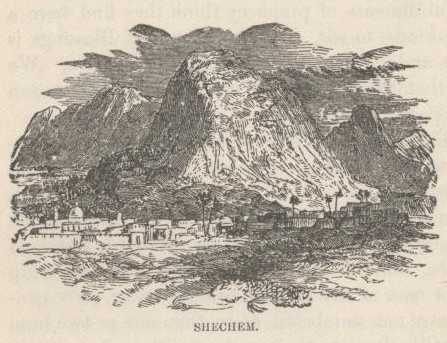The Temple Mount - Harâm esh-Sherif
Topography, Population, etc. of Jerusalem: Bædeker
History of Jerusalem (to 1840) from Bædeker
Bædeker's Jerusalem
Palestine and Syria: Handbook for Travelers
Jerusalem, to most travellers, is a place of overwhelming interest, but, at first sight, many will he sadly disappointed in the dirty modern town, with its crooked and badly paved lanes. It would seem, at first, as though little were left of the ancient city of Zion and Moriah , the far-famed capital of the Jewish empire.
Route 23. From Nâbulus to Jênin and Haifá
Palestine and Syria: Handbook for Travelers
1. From Nâbulus to Sebastîyeh (2 hrs.).
The direct route to Jênin, usually taken by the baggage muleteers, leads past the village of Bêt Imrin to Jeba' (p. 261).
Route 22. From Lubban to Nâbulus
Lubban
We left Jacob’s Well and traveled till eight in the evening, but rather slowly, for we had been in the saddle nineteen hours, and the horses were cruelly tired. We got so far ahead of the tents that we had to camp in an Arab village, and sleep on the ground. We could have slept in the largest of the houses; but there were some little drawbacks: it was populous with vermin, it had a dirt floor, it was in no respect cleanly, and there was a family of goats in the only bedroom, and two donkeys in the parlor.
Shechem, Jacob's Well and the Tomb of Joseph
 The narrow canon in which Nablous, or Shechem, is situated, is under high cultivation, and the soil is exceedingly black and fertile. It is well watered, and its affluent vegetation gains effect by contrast with the barren hills that tower on either side.
The narrow canon in which Nablous, or Shechem, is situated, is under high cultivation, and the soil is exceedingly black and fertile. It is well watered, and its affluent vegetation gains effect by contrast with the barren hills that tower on either side.